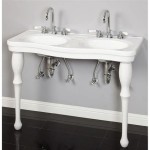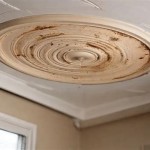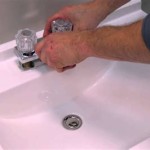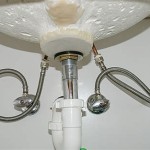How to Remove and Retile a Bathroom Floor
Remodeling a bathroom floor can significantly enhance its appearance and value. Whether you're updating an outdated floor or addressing water damage, removing and retiling is a worthwhile project. Here's a comprehensive guide to help you tackle this task with ease:
1. Demolition
Remove Fixtures and Trim: Start by removing all fixtures, such as the toilet, vanity, and shower. Remove baseboards, quarter-round, and door trim as well.
Protect Walls and Bathtub: Cover the walls around the work area with plastic drop cloths or cardboard to protect them from dust and debris. Use painter's tape to secure the plastic to the baseboards.
Demolish Existing Tile: Use a hammer or sledgehammer with a chisel or crowbar to carefully break up the existing tile. Wear safety glasses and gloves for protection.
Remove Mortar: Once the tile is removed, use a cold chisel to remove the mortar underneath. Be patient and avoid damaging the subfloor.
2. Preparation
Inspect Subfloor: Inspect the subfloor for any signs of rot, damage, or unevenness. Make necessary repairs or replace the subfloor if needed.
Level the Floor: Use a self-leveling compound to smooth out any irregularities in the subfloor. This will ensure a level and stable base for the new tile.
Apply Underlayment: Install an underlayment, such as plywood or cement board, over the subfloor. This will provide additional support and help prevent cracking in the new tile.
3. Tiling
Plan the Layout: Determine the layout of the new tile. Typically, tiles are installed in a straight or staggered pattern. Mark the layout on the underlayment using a chalk line or laser level.
Spread Thin-Set Mortar: Apply a thin layer of thin-set mortar to the underlayment using a notched trowel. Work in small sections to prevent the mortar from drying out.
Install Tiles: Place the tiles onto the mortar, aligning them with the layout. Press down firmly and use a rubber mallet to ensure proper adhesion.
Grout the Tiles: Once the tiles are in place, mix and apply grout to fill the spaces between them. Use a grout float to press the grout into the joints.
4. Finishing Touches
Clean the Tile: Wipe down the tiled surface with a damp sponge to remove any excess grout or adhesive. Use a tile cleaner for a deep clean.
Seal the Grout: Seal the grout joints using a sealant to prevent moisture penetration and staining.
Reinstall Fixtures: Reinstall the toilet, vanity, and shower once the tile and grout have cured. Replace the baseboards, quarter-round, and door trim.
By following these steps, you can successfully remove and retile your bathroom floor, creating a beautiful and functional space that enhances your home's value.

How To Remove A Tile Floor

How To Re Tile Shower Floor Hometalk

How To Retile A Shower Floor Art Tile Renovation

Easy Ways To Replace Bathroom Tiles With Pictures Wikihow

How To Retile A Shower Floor Art Tile Renovation

How To Renovate Bathroom Without Removing Tiles Multipanel

How To Remove Tile Flooring Yourself With Tips And Tricks All Things Thrifty

How To Diy Repair Your Leaking Shower Without Removing Tiles United Trade Links

How To Upgrade Bathroom Tile Without Replacing

Remove Bathroom Tile How To Your
Related Posts







